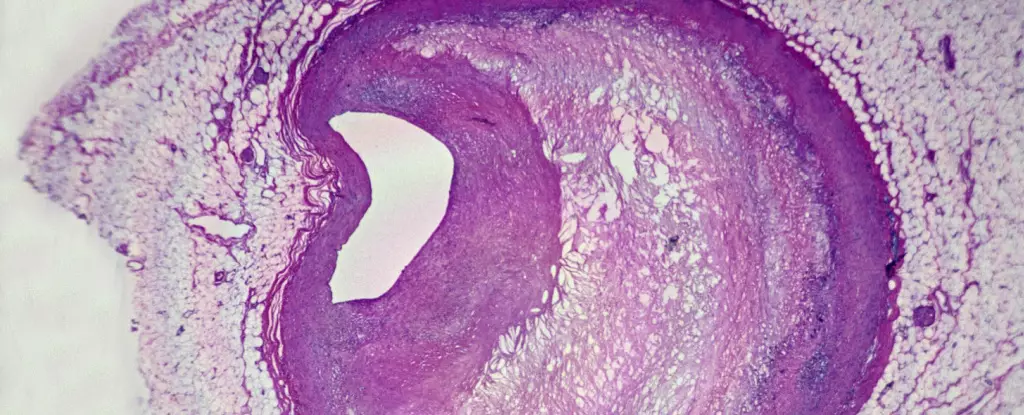In recent years, the pervasive presence of plastics has become a prominent topic of discussion, particularly concerning their impact on human health. From grocery bags to medical devices, plastics have integrated seamlessly into our daily lives, yet the side effects of this convenience are becoming increasingly recognized. Astonishingly, microplastics—small particles derived from larger plastic pieces—have infiltrated human bodies, with fragments discovered in critical organs, including the placenta. This alarming reality necessitates a deeper understanding of the potential risks these microscopic pollutants pose to our health, particularly concerning cardiovascular diseases.
Researchers are diligently investigating how microplastics affect human tissues through innovative methods, such as studying organ-on-a-chip models and laboratory mice. However, a significant gap persists in our knowledge, especially regarding how these particles correlate with real-world human exposure. Few studies have focused on human subjects; a landmark investigation conducted in March 2023 in Italy sought to bridge this gap by analyzing microplastics found in patients undergoing carotid endarterectomy—a surgical procedure that alleviates narrowed arteries to reduce stroke risk.
The study led by medical researcher Raffaele Marfella highlighted the presence of microplastics in fatty deposits surgically removed from patients, prompting an examination of the subsequent health outcomes over a three-year period. An intriguing relationship emerged between the presence of microplastics and the risk of severe health events, including strokes and heart attacks.
Findings of the Study: Correlation and Risks
In this Italian study, shocking results revealed that nearly 60% of the 257 patients analyzed exhibited measurable amounts of polyethylene—a common plastic material—enclosed within their arterial plaques. Additionally, about 12% had traces of polyvinyl chloride (PVC), a versatile plastic used in various products, from pipes to packaging. With laboratory studies indicating that microplastics can provoke inflammation and oxidative stress in heart cells, it became essential to assess the broader implications for cardiovascular health.
The findings were significant: patients with microplastics present in their plaques were found to be 4.5 times more likely to have suffered a stroke, non-fatal heart attack, or died from any cause after 34 months compared to those without detectable microplastics. It raises alarming questions about the risks posed by environmental pollutants, especially when taken alongside the burgeoning rates of plastic production that have far outpaced recycling efforts.
The methodology employed to analyze the presence of microplastics was meticulous and thorough. Using pyrolysis-gas chromatography-mass spectrometry, researchers were able to quantify not only microplastics but also smaller nanoplastics. The distinctions between the types of carbon present in human tissues versus those derived from petrochemical plastics were clarified through stable isotopes analysis.
Despite these intriguing findings, it is crucial to interpret them cautiously. This study was observational in nature, meaning it doesn’t establish direct causation between microplastics and cardiovascular incidents. Other mitigating factors, such as lifestyle choices—smoking, sedentary behavior, and exposure to air pollution—were not extensively examined, which introduces uncertainty into the conclusions drawn.
The implications of these findings are both pressing and complex. As pediatrician Philip J. Landrigan noted, the discovery of microplastics in human tissue raises myriad questions about reducing exposure and understanding long-term health outcomes. The increasing incidence of cardiovascular diseases juxtaposed against the rising tide of plastic usage signifies a troubling trend that demands further investigation.
Moreover, even as cardiovascular disease rates decline in some areas, the intersection between environmental pollution and public health remains murky. The potential role of microplastics in cascading health issues warrants comprehensive research to disentangle these layers and develop strategies for mitigating the impacts.
As societies grapple with the consequences of plastic proliferation, awareness of its potential health risks, especially concerning cardiovascular events, continues to grow. While studies like the one conducted in Italy shed light on alarming correlations between microplastic exposure and adverse health outcomes, the conversation is far from over. Future research must prioritize understanding the direct implications of microplastics on human health, creating informed policies that address both environmental and public health challenges. Until then, the journey to unraveling the health ramifications of our plastic-laden environment remains fraught with questions, pushing for a collective re-evaluation of how we interact with plastic in our daily lives.

Leave a Reply